10 Major Environmental Movements of India
Many environmental movements have been started to protect the environment from various threats. Whereas, some of the movements are working together to shape the world through various activities and awareness. From local efforts to global agreements, each movement plays a big part in helping us to take care of our planet for the future. Here are the stories behind 10 such major environmental movements in India. It also includes inspiration, achievements, activities and shared effort to keep our planet safe for upcoming generations.
1. Bishnoi Movement
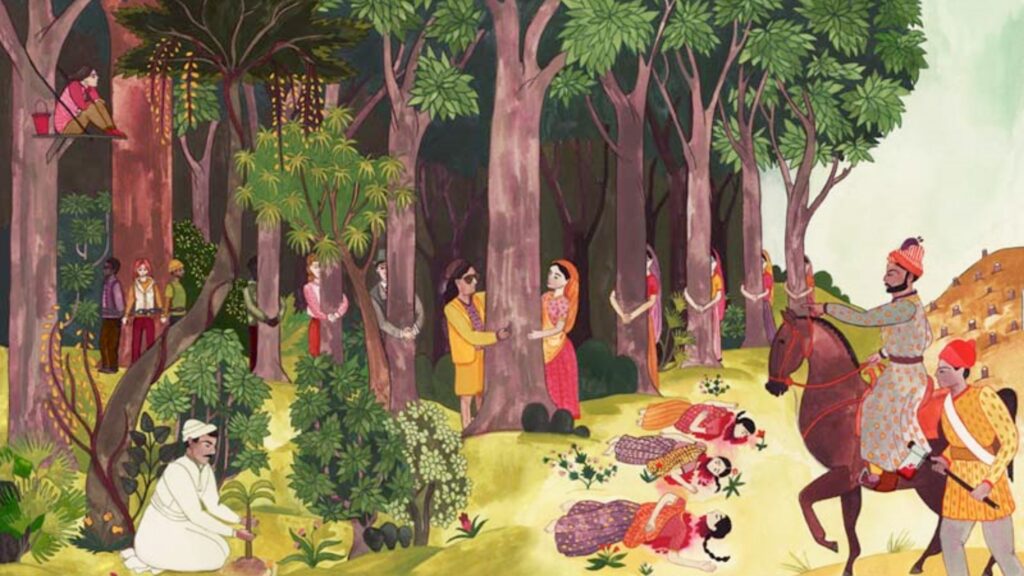
Image: civildisobedience100
- Year Started: 1731
- Place of Origin: Rajasthan
- Founder and Leadership: Amrita Devi
- Objectives: To promote and practice sustainable living while safeguarding nature through reverence, conservation, and protection of trees, wildlife, and natural resources.
A local maharaja ordered the cutting of trees in the year 1731 for the construction of a new palace and to supply fuel wood. In protest, a Bishnoi woman named Amrita Devi hugged a tree and declared that it could only be felled over her dead body. In a tragic turn of events, she, along with many other Bishnois, was killed in the process. This event is considered a pivotal moment in Bishnoi’s history, symbolizing its commitment to environmental protection.
The movement was inspired by the principles of ecological harmony, sustainable living, and reverence for nature given by Guru Jambheshwar (Jambhoji). He laid down 29 tenets (bis means twenty, noi means nine) or rules for his followers, which included directives to protect trees and wildlife, conserve water, and promote vegetarianism.
The Bishnoi community has actively engaged in legal battles to protect their environment. They have petitioned courts and authorities to enforce laws against poaching, deforestation, and environmental degradation. Despite the passage of centuries, the Bishnoi environmental movement remains relevant in contemporary times. Their principles align closely with modern environmental conservation practices, making them an inspiration for global environmental movements. The Bishnoi movement has left a profound cultural legacy in India, inspiring admiration and respect for their environmental ethos. They serve as a reminder of the power of religious and cultural beliefs in fostering a deep connection with nature and promoting sustainable living practices. Therefore, this is the first recognised 10 major environmental movements of India.
Activities and Initiatives
- Leading protests and actions to prevent the felling of trees, especially the Khejri trees, which hold religious and ecological significance for the Bishnoi community.
- Advocate for protecting wildlife from hunting, poaching, and habitat destruction, following the Bishnoi principle of reverence for all living beings.
- Organizing and mobilizing the Bishnoi community, as well as garnering support from allies and activists, to actively participate in conservation initiatives and campaigns.
- Filing petitions and legal challenges against activities that pose threats to the environment, such as deforestation, industrial pollution, and encroachment on wildlife habitats.
- Conducting educational programs, workshops, and outreach activities to raise awareness about environmental issues, sustainable living practices, and the importance of preserving nature.
- Amrita Devi and other Bishnoi villagers sacrificed their lives to protect trees from being cut down.
Major Achievements
- The movement has left a lasting cultural legacy, inspiring admiration and respect for its environmental ethos and principles of reverence for nature.
- Through their legal advocacy and activism, the Bishnoi community has contributed to the establishment of legal precedents and enforcement of laws protecting wildlife, forests, and the environment in India.
- The movement’s relentless efforts have led to the preservation of numerous wildlife habitats, including the conservation of endangered species such as the blackbuck antelope and various bird species.
- The movement has empowered the Bishnoi community and other stakeholders to actively engage in environmental conservation efforts, fostering a sense of ownership and responsibility towards protecting natural resources.
- The sacrifices and dedication of the Bishnoi community have served as an inspiration for numerous environmental movements worldwide, highlighting the power of grassroots activism and traditional knowledge in conservation efforts.
- The movement has played a crucial role in raising awareness about environmental issues and promoting sustainable living practices, both within the Bishnoi community and among the wider public.
- The Bishnoi movement has contributed to the preservation of sacred sites and ecological hotspots, recognizing their spiritual and environmental significance.
2. Silent Valley Movement
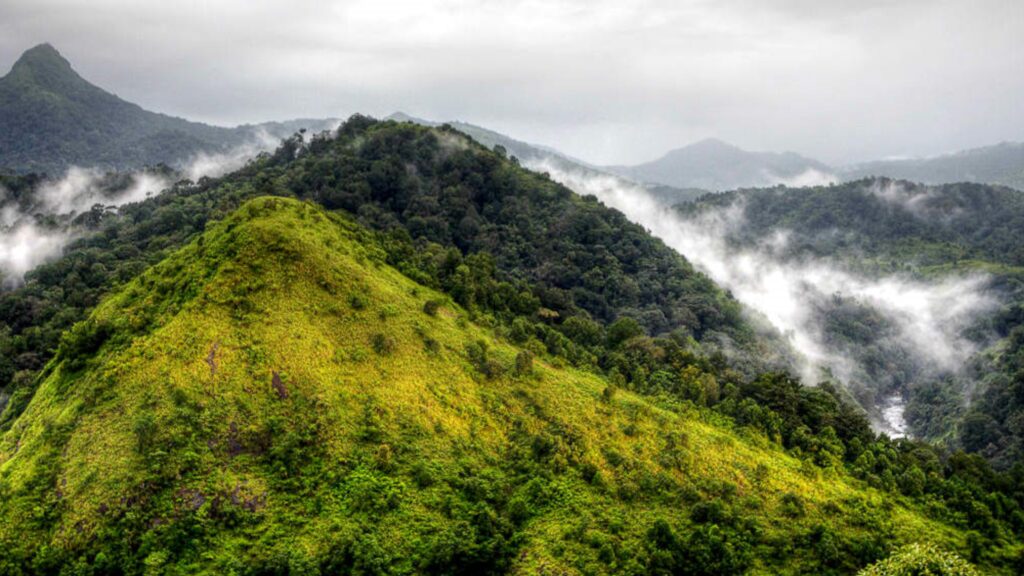
Image: Kerela Tourism
- Year Started: 1970
- Place of Origin: Kerala
- Founder and Leadership: M. K. Prasad, Sugathakumari, Dr. Salim Ali and many more environmentalists.
- Objectives: To prevent the construction of a hydroelectric dam in the Silent Valley region and to preserve its unique biodiversity and ecological integrity.
The Silent Valley Movement begins with the proposed construction of a hydroelectric dam across the Kunthipuzha River, which flows through the Silent Valley region. The Kerala State Electricity Board proposed the dam project as part of its efforts to meet the growing energy demands of the state. However, the proposed dam site was located within the pristine wilderness of the Silent Valley, home to a unique and fragile ecosystem.
Led by environmentalist M. K. Prasad and poet-activist Sugathakumari, the movement gained momentum as a large number of people from different backgrounds joined hands to protest against the dam project. The Silent Valley Movement was a peaceful protest, public demonstration and advocacy campaign. The main aim was to spread awareness about the ecological significance of the Silent Valley and the need to protect it from human intervention. Environmentalists highlighted the rich biodiversity of the region. It includes unique, rare and endangered species of flora and fauna.
The Silent Valley Movement serves as a shining example of how collective action and public awareness can lead to the protection of fragile ecosystems and the preservation of biodiversity. It continues to inspire similar movements across India and around the world, reminding us of the importance of living in harmony with nature and respecting the intrinsic value of every living organism. Therefore, this movement holds immense significance in the history of environmental conservation in India. Thereby, it has been listed in the top 10 major environmental movements of India.
Activities and Initiatives
- Organizes awareness programs, seminars, and workshops to educate the public about the ecological significance of the Silent Valley and the potential impacts of the proposed dam project.
- Collected signatures for petitions addressed to government authorities, urging them to reconsider the dam construction plans and instead declare the Silent Valley as a protected area.
- Holds peaceful demonstrations, marches, and rallies in various cities and towns to express opposition to the dam project and demand its cancellation.
- Engages with print, broadcast, and online media outlets to disseminate information about the Silent Valley Movement.
- Legal petitions and appeals in courts to challenge the legality of the dam project and advocate for the protection of the Silent Valley’s ecosystem.
- Conducted scientific studies, surveys, and documentation of the biodiversity and ecological significance of the Silent Valley region to provide evidence-based arguments against the dam construction.
- Organizes cultural events, art exhibitions, poetry readings, and other creative expressions to celebrate the beauty of the Silent Valley and evoke emotional connections to nature.
Major Achievements
- Successfully mobilize public opinion on policy-making. Despite facing opposition from vested interests and bureaucratic hurdles, the movement succeeded in garnering widespread support both nationally and internationally.
- The scientific community also lent its voice to the cause, conducting research studies and publishing reports that emphasized the ecological value of the Silent Valley.
- In 1984, the Government of India declared the Silent Valley region a national park, thereby ending the proposed dam project.
3. Chipko Movement
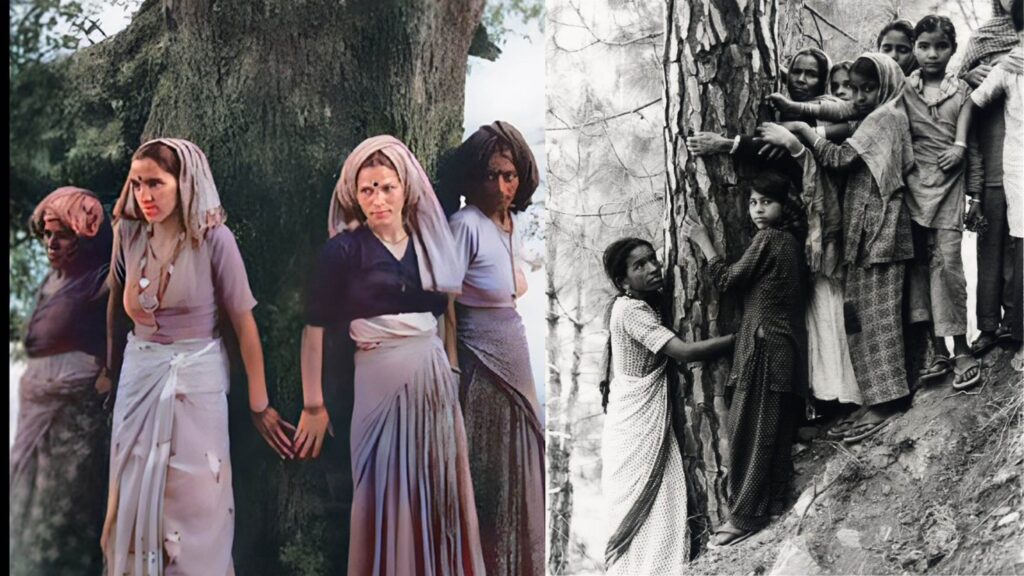
Photographs: Manoj Chandran and Right Livelihood Award
- Year Started: 1973
- Place of Origin: Uttarakhand
- Founder and Leadership: Sunderlal Bahuguna.
- Objectives: To oppose deforestation, promote sustainable forestry practices, empower local communities, challenge corporate interests, and raise awareness about the interconnectedness of forests and human well-being.
The government permitted a company to cut down trees to make sports goods. A local environmentalist named Sundarlal Bahuguna and women from the Mandal village (Uttrakhand) protested against the deforestation in the area. They hugged the trees to stop loggers from cutting them down. This peaceful protest was the landmark of the Chipko Movement. The Bishnoi Movement of Khejarli, Rajasthan, India inspired this movement.
Thereafter, the movement was triggered by the growing concerns about deforestation. The rural communities in the region heavily depended on the forests for their livelihoods. Whereas, the government’s decision to grant logging contracts to commercial entities threatened the local ecosystem and the traditional way of life.
The movement quickly spread to other parts of the region, and women played a central role. The participants used peaceful protests and slogans to draw attention to the environmental degradation caused by deforestation. Thereafter, the Chipko Movement received widespread support and captured the imagination of people nationally and internationally. Therefore, it rightfully occupies a space within the recognized 10 major environmental movements of India.
Activities and Initiatives
- Sustainable Forestry and Conservation: The Chipko Movement aimed to tackle the harmful effects of deforestation. Activists hugged trees set for cutting to emphasize the need for sustainable forestry, promoting conservation intertwined with local ecosystems.
- Women as Guardians of the Environment: A unique aspect of the Chipko Movement was the significant role of women in protests. Since women are most affected by environmental harm, they became the main protectors of forests. This emphasized the connection between environmental and social issues, also empowering women as environmental stewards.
- Gandhian Principles and Peaceful Resistance: Inspired by Mahatma Gandhi’s non-violent philosophy, the Chipko Movement used peaceful resistance to defend the environment. Villagers, including men, women, and children, hugged trees marked for logging, creating a powerful symbol of their dedication to nature.
Major Achievements
- The Chipko Movement successfully stopped deforestation in many places. Thereafter, the protests made the Indian government rethink its forestry rules, focusing more on community-based and sustainable practices. Because of the larger extent of the impact it went beyond India, inspiring global environmental activism.
- Because of the movement, the government changed its policies. In 1980, a 15-year logging ban was implemented in the region. They also introduced community-based forestry management, letting local communities take part in conserving and using forest resources sustainably.
4. Tehri Dam Conflict
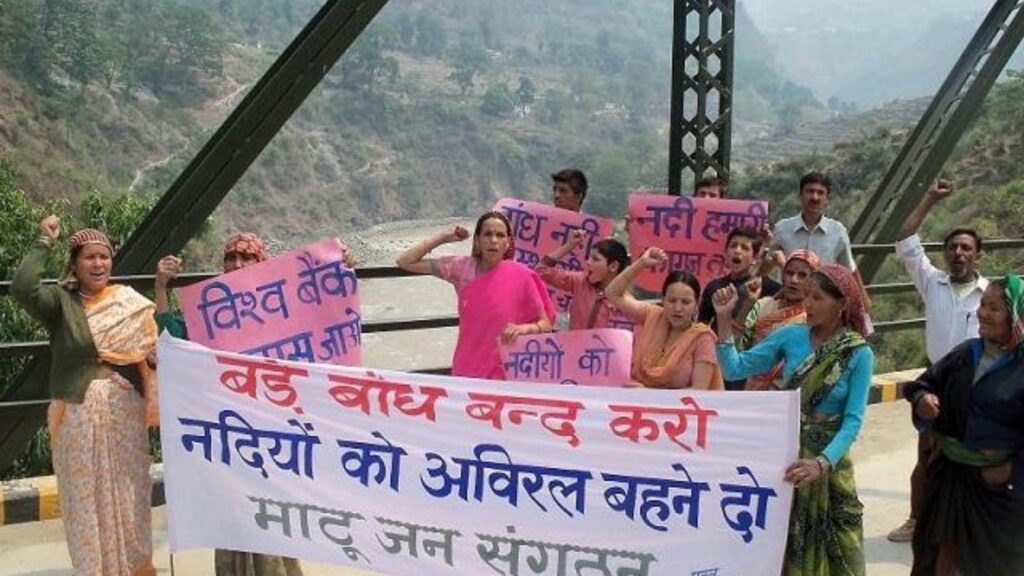
Image: JagranJosh
- Year Started: 1980
- Place of Origin: Uttarakhand
- Founder and Leadership: Sunderlal Bahuguna, Medha Patkar and Local Community Leaders.
- Objectives: To oppose the construction of the Tehri Dam and advocate for sustainable development practices that respect the rights of indigenous communities and protect the environment.
The Indian government proposed the construction of the Tehri Dam at the Bhagirathi River for electricity generation, irrigation, and flood control. The dam project aimed to address the growing energy needs of the region and contribute to India’s development. However, the proposed dam site was located in an ecologically sensitive area, nestled amidst the pristine forests and valleys of the Himalayas. The construction of the Tehri Dam would involve the submergence of vast stretches of land, including fertile agricultural fields, forests, and several villages inhabited by indigenous communities.
As the dam construction began it sparked widespread protests and opposition from residents, environmentalists, activists, and concerned citizens who raised concerns about the environmental and social impacts of the project. These voices of dissent formed the foundation of the Tehri Dam Conflict. One of the primary concerns raised by the opponents of the dam was the threat posed to the fragile Himalayan ecosystem and biodiversity due to deforestation, habitat loss, and disruption of river ecosystems. Additionally, there was concern about loss of livelihoods, cultural disruption, and social unrest.
Despite the opposition, the construction of the Tehri Dam continued. Thereby, the conflict intensified as protesters engaged in non-violent resistance. Ultimately, the Tehri Dam was completed and became operational in the early 2000s, despite decades of opposition and controversy. While it has contributed to electricity generation and water management in the region, the legacy of the Tehri Dam Conflict continues to resonate. Therefore, it has been included in the top 10 environmental movements of India.
Activities and Initiatives
- Protests and legal challenges aimed at halting the dam construction or demanding its relocation to less ecologically sensitive areas.
- Activists argued for alternative sustainable energy solutions. In addition, they emphasize the need for participatory decision-making and respect for the rights of affected communities.
- It highlighted the complexities and trade-offs involved in large-scale infrastructure projects. It fosters the need for balancing economic development with environmental sustainability and social justice.
Major Achievements
- The movement raises awareness about the environmental and social impacts of large-scale dam projects.
- The movement advocates for the rights of indigenous communities residing in the dam’s area.
- Judicial scrutiny and public debates on the legality and ethics of large infrastructure projects.
- The movement influenced policy reforms and guidelines for dam construction.
- The movement promotes alternative energy solutions such as decentralized renewable energy projects and micro-hydropower schemes. In addition, energy conservation measures as viable alternatives to large dams.
- It fosters collaboration among diverse stakeholders and inspires future generations of activists to advocate for environmental justice and sustainability.
5. Jungle Bachao Andolan
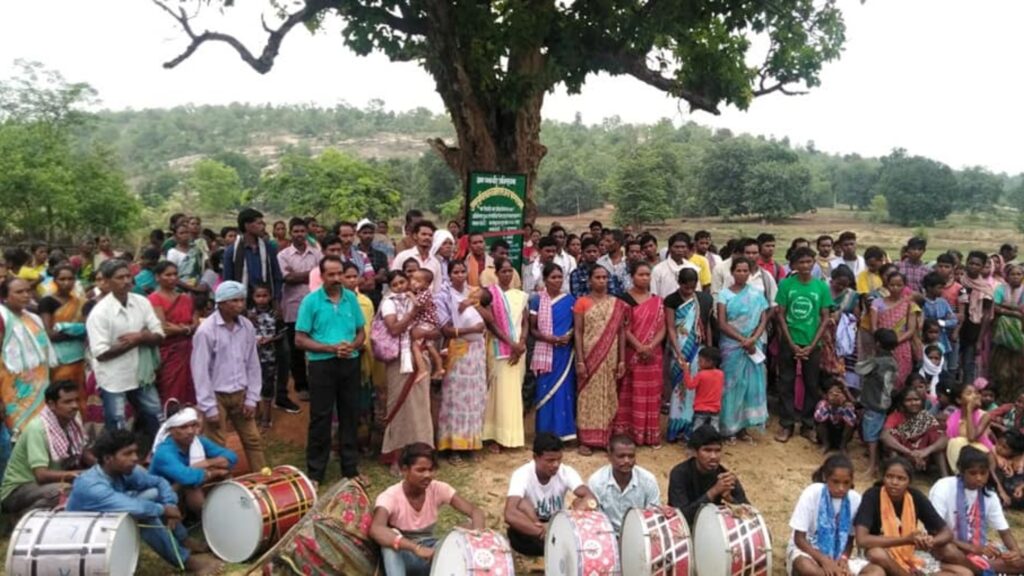
Image: JJBA Activists
- Year Started: 1982
- Place of Origin: Jharkhand
- Founder and Leadership: Sailendra Mahto, Devendra Maghi and the tribals of Singhbhum.
- Objectives: To oppose the government’s decision to replace the natural sal forest with Teak.
The government of India decided to replace the native Sal forest with Teak trees to get more commercial value. Plans were drafted to clear extensive areas of the untouched Singhbhum natural Sal forest. The Jungle Bachao Andolan was started to raise awareness about the ecological significance of the Sal forest and the destructive impact of its replacement. Tribal people from Singhbhum organize peaceful protests, rallies, campaigns, and marches to stand united against the government’s decision. They also conduct community outreach programs and engage with the media to garner public support and urge the government to reconsider its plans.
As the movement gained momentum, it attracted attention from environmental organizations, legal experts, and concerned citizens nationwide. Several petitions were filed in courts to halt the deforestation and protect the forest. Thereafter, the government was compelled to reconsider its plans and engage in dialogue with the stakeholders involved. Through negotiations and compromise, a mid-solution was proposed ensuring the protection of the Sal forest for generations to come.
Later, the four-tier organization known as Jharkhand Jungle Bachao Andolan (JJBA) was established. The organization comprises the traditional village council (Gram Sabha), Forest Protection Committee, women’s cooperatives, and youth forum (Bal Akhra). Even now, it operates efficiently in Jharkhand, Odisha, and Bihar to protect traditional forests.
The Jangal Bachao Andolan serves as a testament to the power of grassroots activism, community solidarity, and the enduring bond between humans and nature. Therefore, it has been included in the top 10 environmental movements of India.
Activities and Initiatives
- The Jangal Bachao Andolan emphasizes the importance of sustainable forest management practices. In addition, advocates for alternatives to clear-cutting and monoculture plantations.
- They proposed initiatives for community-based conservation, ecotourism, and non-timber forest products, showcasing the potential for economic development while preserving the forest’s integrity.
- The Andolan initiated legal actions to challenge the government’s decision to replace the Sal forest, leading to judicial interventions and decisions favouring forest conservation.
- The Andolan mobilized local communities, including tribal people from Singhbhum, to actively participate in peaceful protests, rallies, and campaigns to defend the forest.
Major Achievements
- Implementation of The Scheduled Tribes and Other Traditional Forest Dwellers (Recognition of Forest Rights) Act 2006.
- The movement succeeded in raising awareness about the ecological significance of the Sal forest and the detrimental effects of its replacement with Teak trees.
6. Appiko Movement
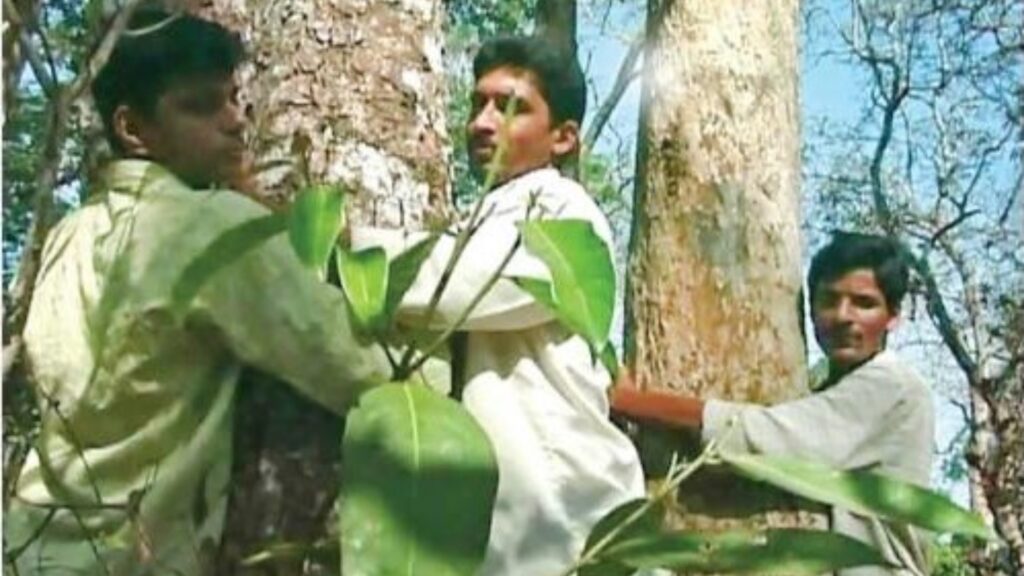
Image: HinduTamil
- Year Started: 1983
- Place of Origin: Karnataka
- Founder and Leadership: Panduranga Hegde.
- Objectives: To protect the Western Ghats from deforestation and unsustainable logging practices.
The Appiko Movement originated against large-scale deforestation and commercial logging in the Western Ghats. The forests of the area were rapidly depleting due to the expansion of timber industries and government-sanctioned logging operations. In response to these environmental threats, a group of concerned citizens led by Panduranga Hegde started peaceful protests and awareness campaigns. The main objective was to highlight the ecological significance of the forests and the adverse impacts of deforestation on the local communities and wildlife.
The name “Appiko” derives from the Kannada word for “embrace,” symbolizing the villagers’ practice of hugging trees to prevent them from loggers similar to the iconic Chipko Movement.
The movement gained momentum as it spread to various parts of the Western Ghats, with villagers, farmers, students, and environmentalists joining hands to protect their forests and assert their rights over natural resources. They employed a variety of tactics, including tree-hugging protests, sit-ins, marches, and public demonstrations, to peacefully resist logging activities and demand the implementation of sustainable forestry practices. The movement demonstrated the power of grassroots activism in protecting precious natural resources and inspired similar initiatives across India and beyond. Thereby, it has been listed as top 10 environmental movements of India.
Activities and Initiatives
- Peacefully protesting such as hugging trees tightly against deforestation and unsustainable practices.
- Spreading awareness about why forests are crucial.
- Uniting communities to defend their rights to forest resources.
- Advocates for stronger government regulations to safeguard forests and initiates legal actions to challenge harmful activities in forests.
Major Achievements
- Successful protection of large areas of Western Ghats including Kudremukh National Park from mining and logging activities.
- The movement influenced government policies and practices regarding forest management.
- Through legal challenges and court cases, the movement secured victories that halted logging, mining, and land encroachments in forested areas.
- The movement empowered local communities to assert their rights over natural resources and participate in decision-making processes.
- The movement highlighted the rights of indigenous tribes and forest-dwelling communities.
7. Movement Against Bauxite Mining
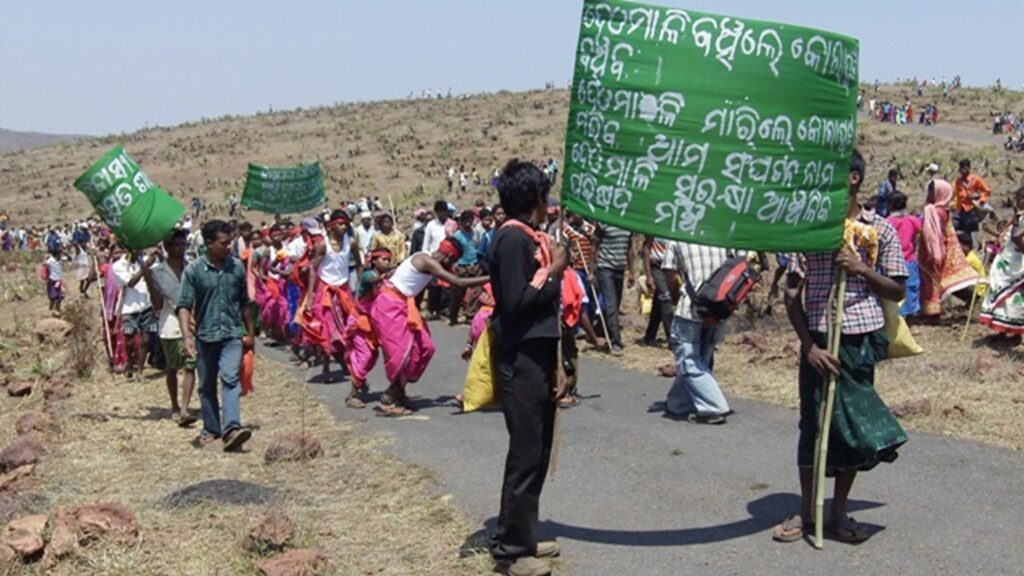
Tribals gather on Orissa’s highest peak Deomali; Image: Sanhati
- Year Started: 1985
- Place of Origin: Odisha
- Founder and Leadership: Gonds, Binjhals, Kandhas, Poraja and Kondh tribal communities.
- Objectives: To protect the land, resources and cultural heritage of indigenous communities from the adverse impacts of bauxite mining and unsustainable development practices.
A series of environmental movements unfolded, driven by the local communities to protect their natural heritage. The story begins in the Gandhamardan hills, where the tribal communities, including Gonds, Binjhals, and Kandhas, revered the land as their mother. As the environmental movements in Odisha unfolded, women emerged as prominent leaders, uniting people across age, gender, and social divides. The protests were not just about protecting the environment but also about preserving age-old livelihood resources and indigenous wisdom.
Through picketing, processions, and public hearings, the local communities in Odisha showcased their resilience and determination to defend their ecosystems. The movements were not just about resistance but also about re-establishing the functional importance of indigenous institutions in environmental protection.
The collective efforts of the tribal communities supported by environmental activists led to significant victories. The proposed mining projects faced strong opposition, and the voices of the indigenous people were heard loud and clear. The environmental movements in Odisha became a beacon of hope and inspiration for other regions facing similar challenges. Therefore, it has been included in the top 10 environmental movements of India.
Activities and Initiatives
- The local people of Gandhamardan Hills rose in protest against the plans of bauxite mining by BALCO. Led by indigenous leaders, they voiced their concerns about the potential environmental impact of mining activities. The movement gained momentum as villagers from Kuchipadar and surrounding areas joined hands to protect their cultural territory.
- In Niyamgiri hills, home to the Dongaria Kondha tribe who considered themselves descendants of Niyam Raja. These hills are not just a forest but a sacred land intertwined with the cultural identity of the indigenous communities. When the threat of mining loomed over Niyamgiri, the Dongarias united to safeguard forests and wildlife in the area.
- Meanwhile, in Kashipur, the Poraja and Kondh tribes took a stand against bauxite mining projects. The movements in Kashipur highlighted the efficient use of water resources and the negative impact of mining.
- Despite facing threats from security forces the movement against bauxite mining is going on. Over 15,000 people united in the year 2011 at Deomali Hill under the Deomali Regional Environment Protection Forum to protect their land and forests.
Major Achievements
- Successfully halting or delaying bauxite mining projects that threatened the ecological balance and livelihoods of indigenous communities.
- Raising awareness about the importance of sustainable development and the preservation of natural resources.
- Empowering local communities, especially women, to actively participate in decision-making processes regarding environmental conservation.
- Highlighting the need to respect and protect indigenous knowledge and cultural practices related to land stewardship.
- Influencing policy decisions and promoting more environmentally sensitive approaches to resource extraction and development projects in the region.
- Strengthening the unity and solidarity among diverse groups within the communities to collectively defend their environmental rights and heritage.
8. Narmada Bachao Andolan
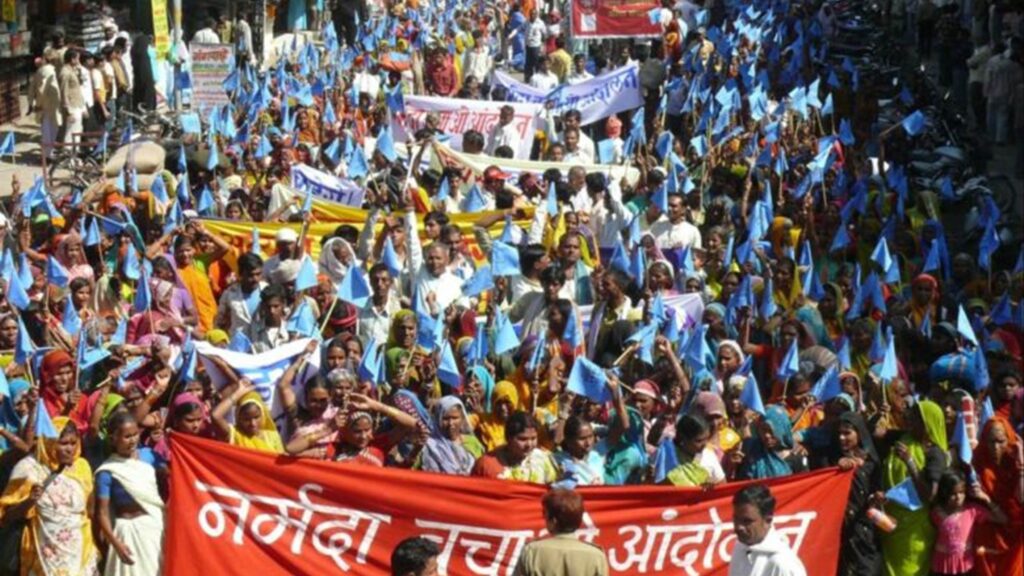
Photograph: Countercurrents.org
- Year Started: 1985
- Place of Origin: Madhya Pradesh
- Founder and Leadership: Medha Patkar
- Objectives: To oppose large-scale dam projects on the Narmada River, advocating for the rights of affected communities, sustainable development, and environmental preservation through nonviolent resistance.
The movement primarily focuses on constructing large dams along the Narmada River, one of the longest rivers in India, as part of the Narmada Valley Development Project. The proposed dam projects, including the Sardar Sarovar Dam, were designed to address issues of water scarcity, generate hydroelectric power, and also to facilitate agricultural development in the region. However, the construction of these dams threatened the displacement of numerous communities, especially tribal populations, whose homes and livelihoods were in the path of the reservoirs.
The Narmada Bachao Andolan, meaning Save the Narmada Movement, was a grassroots effort. The movement aims to draw attention to the environmental and social consequences of the dam projects. Therefore, it has earned its place among the 10 major environmental movements of India.
Activities and Initiatives
- Indigenous Rights and Environmental Consequences: The movement emphasized the adverse environmental consequences of large dams. This includes displacement, loss of biodiversity, and the disruption of traditional livelihoods. Activists argued for alternative, sustainable solutions that respected the river’s ecological balance.
- Non-Violent Resistance and Satyagraha: The NBA engaged in satyagraha, or non-violent resistance, against the dam projects. On this occasion, many villagers including women and children, participated in protests, hunger strikes, and peaceful demonstrations to highlight the injustices faced by those slated for displacement.
- Legal Battles and International Attention: The NBA took its fight to the courts, challenging the legality and ethicality of the dam projects. Thereafter, the movement gained international attention, drawing support from environmentalists, human rights activists, and organizations advocating for indigenous rights.
Major Achievements
- The movement prompted a reassessment of dam policies. This led to increased scrutiny and a focus on balancing development with protecting indigenous communities and the environment.
- The movement influenced policy changes, leading to improvements in rehabilitation and resettlement policies. It also underscored the importance of considering environmental and social impacts in large infrastructure projects.
9. Save the Western Ghats March
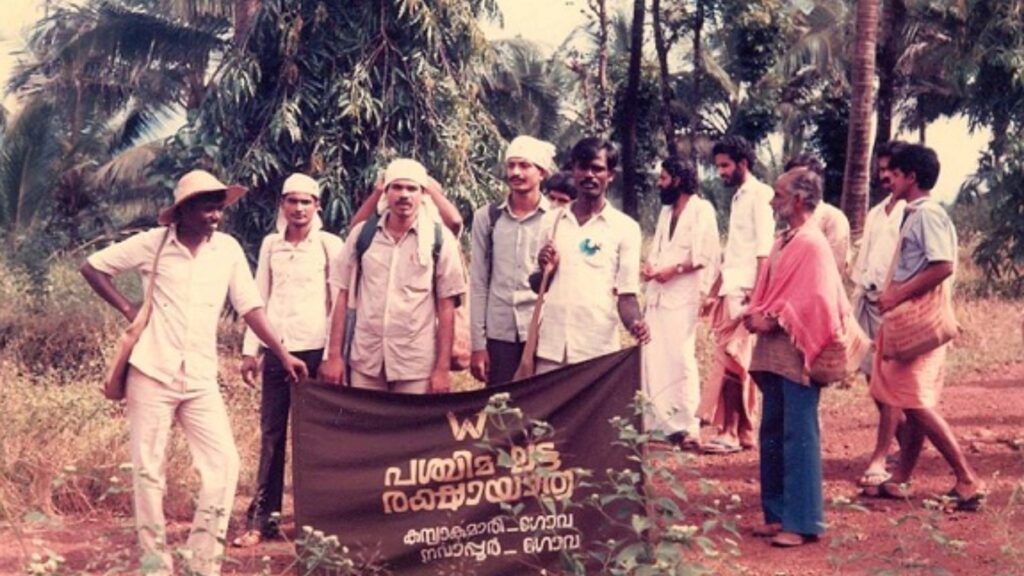
Image: Ecologise
- Year Started: 1986
- Place of Origin: Goa
- Founder and Leadership: Kumar Kalanand Mani, Prof. Kailash Chandra Malhotra and 19 coordinators.
- Objectives: To halt degradation and protect the entire Western Ghats ecosystem.
The Save the Western Ghats March (SWGM) was initiated during a national consultation on the environment to halt the ecosystem degradation of the Western Ghats. Peaceful Society played a pivotal role in coordinating the logistics and organization of the March. The march involved Joint Coordinating Agencies for the Northern and Southern regions of the Ghats, alongside a National Advisory Committee led by renowned anthropologist Prof. K.C. Malhotra.
The March saw representatives from over 160 organizations and thousands of individuals participate in a 100-day journey along the Ghats’ length. The event included over 600 meetings, generating immense enthusiasm among the youth and garnering extensive media coverage.
Despite its historic significance, the SWGM faced challenges in capitalizing on its momentum for sustained environmental change. However, Peaceful Society proposed a comprehensive plan for afforestation and community empowerment, envisioning a sustainable development model rooted in local participation.
While this plan couldn’t be fully realized post-march, the SWGM left a lasting impact on environmental activism in India. It fostered networks with like-minded organizations and led to successful afforestation programs. Therefore, it has been included in the top 10 environmental movements of India.
Activities and Initiatives
- Organizes a national consultation on the environment to highlight the urgent need to halt degradation in the Western Ghats.
- Planned and coordinated a march along the entire length of the Western Ghats to raise awareness about the threats facing the region.
- Establish Joint Coordinating Agencies for the Northern and Southern regions of the Western Ghats.
- Formation of a National Advisory Committee chaired by renowned anthropologist Prof. K.C. Malhotra.
- Conducted 600+ meetings along the route of the march to engage with local communities and stakeholders.
- Mobilization of representatives from over 160 organizations and thousands of individuals to participate in the 100-day march.
- Preparation of a comprehensive plan for afforestation and community empowerment post-march to ensure sustainable development in the region.
Major Achievements
- The movement successfully raised awareness about the threats facing the Western Ghats.
- It mobilized support from a diverse range of stakeholders, including environmental organizations, local communities, and concerned citizens to protect the Western Ghats.
- The movement advocated for policy changes and stricter regulations to halt activities such as deforestation, mining, and urbanization that were threatening the Western Ghats.
- It promoted the adoption of sustainable development practices that balanced environmental conservation with the socio-economic needs of local communities living in the Western Ghats region.
- It served as a model and inspiration for numerous other environmental campaigns and movements across India.
10. National Mission for Clean Ganga
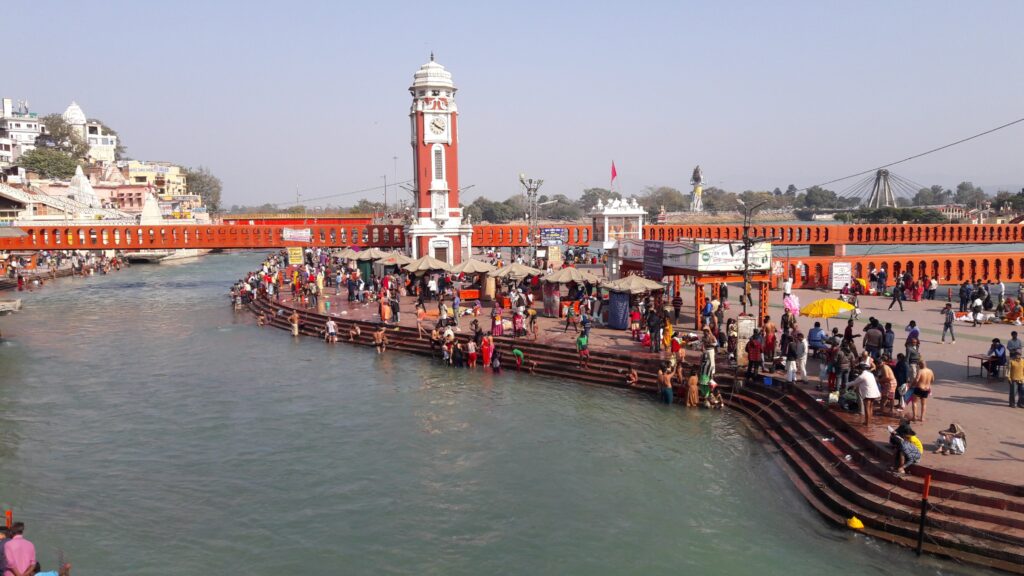
- Year Started: 2011
- Place of Origin: Delhi
- Founder and Leadership: Goverment of India.
- Objectives: To restore the cleanliness and ecological health of the Ganga River.
The Ganga holds immense cultural, spiritual, and economic importance for millions of Indians. Due to its unique self-cleaning potential, it is considered as a lifeline for the nation. However, over the years, the river has become filled with garbage, sewage, and chemicals from factories, leading to suffering among those who rely on it for water and livelihoods. Realizing the urgency of the situation, the Indian government launched the National Mission for Clean Ganga (NMCG) in 2011, aiming to clean up the river and restore its health.
To achieve this goal, the government constructed sewage treatment plants to clean polluted water before it enters the river, while also implementing rules to prevent factories from dumping chemicals. Additionally, efforts were made to educate people about the importance of keeping the Ganga clean. This initiative wasn’t solely about the environment; it was also about aiding the millions of people dependent on the river.
In 2014, the NMCG implemented the Namami Gange Programme to ensure the uninterrupted flow of clean water. This involved promoting sustainable agriculture, engaging stakeholders, and raising public awareness. The programme collaborated with local communities, environmentalists, and experts to address concerns and encouraged public participation through initiatives like the Ganga Volunteer Programme.
Despite challenges, the NMCG has made significant progress, with improved water quality in some areas and ongoing efforts to rejuvenate the ecosystem. Therefore, it has been included in the top 10 environmental movements of India. However, the journey towards a clean and rejuvenated Ganga continues, requiring sustained commitment, investment, and collaboration from all stakeholders. The future looks hopeful, with collective efforts aimed at ensuring the river remains clean and healthy.
Activities and Initiatives
- Effective implementation of Sewerage Treatment Infrastructure across the Ganga basin.
- Ganga river-front development to enhance tourism.
- Regular surface cleaning of the Ganga River.
- Effective implementation of industrial effluent monitoring and management.
- Capacity building through public awareness and campaign.
Major Achievements
- Implementation of pollution control measures has led to a decrease in the levels of sewage and industrial pollutants entering the Ganga River.
- Numerous STPs have been constructed along the banks of the Ganga, treating wastewater before it is discharged into the river.
- Active engagement with stakeholders has facilitated collaboration and resource-sharing for effective clean-up measures.
Conclusion
The listed environmental movements have played a very crucial role in shaping India. Therefore, it occupies a position in the top 10 major environmental movements of India. However, there are many other environmental movements which play an important role in the conservation of nature.
Despite of author’s diligent efforts, there may be some movements or instances where certain aspects or points have unintentionally been missed.
(Source: https://sciph.info/)